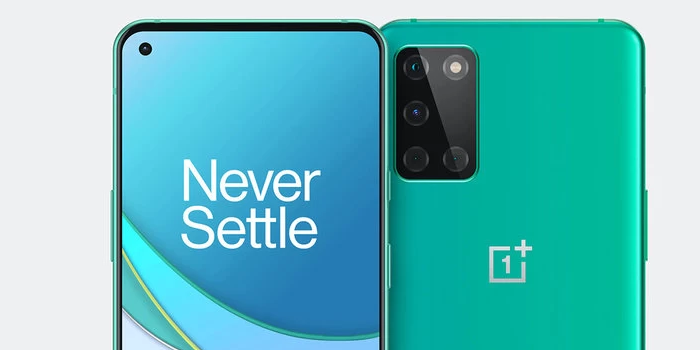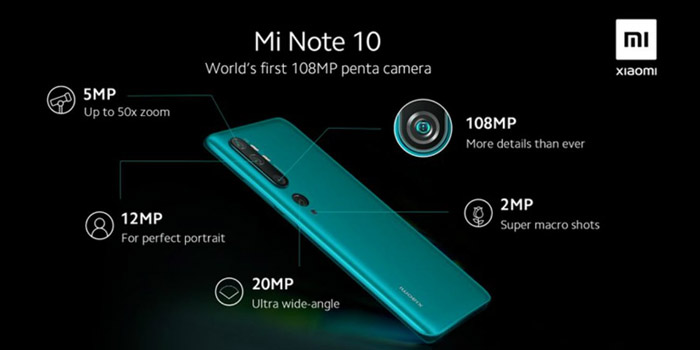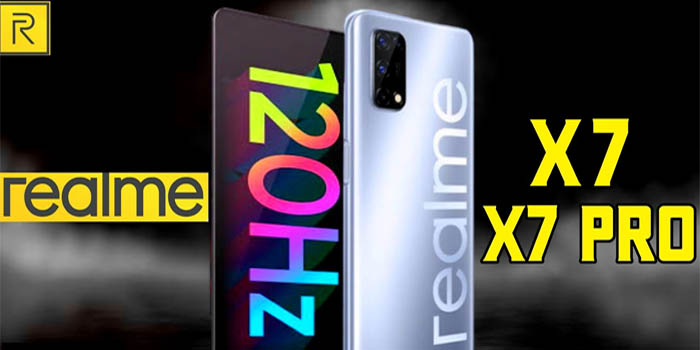Search result

In mid-February, the premiere of two flagships Xiaomi Mi 10 and Mi 10 Pro was released in an online event. But due to Coronavirus outbreak company decided to delay the launch. The flagships have top-end characteristics, an attractive design and many functionalities, but it seems that the company is planning for more.Until today, Xiaomi Mi 10 Pro was a high-end phone of the premium category and occupies a leading position in the portfolio of smartphones of the company. But it may happen that it won't be the able to hold the same position for long time, and all because of the release of Xiaomi Mi 10 Pro +.
Rumors have confirmed the upcoming announcement of the plus version. The phone has a slogan "Look beyond the world". The ultimate flagship Xiaomi Mi 10 Pro+ should have a 100 megapixel sensor in the main camera, support for 12x optical zoom, a display with a refresh rate of 120 Hz, the top-end Snapdragon 865 platform and fast 65-watt charging.
The authenticity of this news remains to be verified. According to rumors circulating in the network, in the second half of the year, Xiaomi plans to show five more flagships based on the Snapdragon 865. There are also predictions that the company will release a device with 6.67-inch (2340 × 1080 pixels) Full HD+ AMOLED 19.5:9 aspect ratio HDR10 + display with 90Hz refresh rate. The phone will be powered by Octa Core (1 x 2.84GHz + 3 x 2.42GHz + 4 x 1.8GHz Hexa) Snapdragon 865 7nm Mobile Platform with Adreno 650 GPU. Xiaomi Mi 10 may feature a high-quality 108MP rear camera with 1/ 1.33″ Samsung sensor, 0.8μm pixel size, f/1.69 aperture, OIS, 8P lens LED flash. 13MP 123° ultra-wide-angle lens with f/2.4 aperture. 2MP depth sensor and 2MP macro lens with f/2.4 aperture, 8k at 30fps, 4k 60fps, 960fps at 720p.

OnePlus recently confirmed camera specs through its official twitter page. The company has confirmed that the 8T will have an ultra-wide camera on the rear side. This confirms the earlier rumors about the rear camera specs. The leaks also suggest that the company has placed rear cameras in a relatively large rectangular protrusion, that looks similar to one we have in Samsung's latest phones.
OnePlus also confirmed that the 8T will have the same refresh rate as the OnePlus 8 pro. That will give the display refresh rate a boost from 90Hz to 120Hz to reach peak frame rates of 120 frames per second. While phone manufacturers are moving the refresh rate to a higher level, some apps and softwares seem to lag behind. If you are using an app that is incompatible with such a higher refresh rate, the phone will return to 60Hz or 90Hz depending on the app. This mean that the interface of the phone will experience some shuttering or lag while switching to normal refresh rate.
Another leak suggest that the phone will be using the 2.5+D flexible panel. This also means that the phone will be much brighter than before with a peak brightness of 1100 nits. Those high levels of brightness, coupled with AMOLED panel and the graphics processing capabilities will also ensure the screen is displaying HDR10+ content. The phone covers 100 percent DCI-P3, which is the best color accuracy you can find in any android smartphone by today.
Other details include the 65W warp charging technology that can get a 4,500mAh from zero to hundred percent in less than 40 minutes, plus a 120Hz refresh rate AMOLED display. Additional rumored specs suggest a flat display with the curved panel on the OnePlus 8. The phone features a single hole-punch camera in the top-left corner of the display. The phone is expected to be announced on 14 October, at which point we will know the rest of the details on hardware and software.

This year we witness a few affordable 5G smartphones but the cheapest one is yet to come. The latest Realme 7 will hit the market on November 30 and while it costs only $370, Amazon has an introductory price starting at $300. This makes it the cheapest phone with 5G network support in the UK. The Realme 7 has a 6.5-inch display with 1080 x 2400 resolution and a 120Hz refresh rate. The phone is powered by a MediaTek Dimensity 800U chipset. The phone will be available in two models for 6GB RAM and 8GB RAM with a 128GB internal storage option for both.
As per the listing, the phone has a 5,000mAh battery with 30W fast charging. The phone has an advanced 7nm Gaming Processor, delivering high-quality gaming experiences. It supports advanced 5G+5G DSDS technology, enabling seamless network switching. The phone has a 30W dart charge that brings an unparalleled charging experience. With a massive 5,000mA battery, you can watch movies, play video games all day long without getting worried about the battery. With a 5,000mAh battery you get 17 hours of YouTube, 25 days standby time, 35 hours call time, and 9 hours gaming time condition to fair usage.
With additional support for OTG reverse charging, you can charge your IoT device anytime, anywhere. Realme7 also has a super power-saving mode to kick-in when you fall below 10% battery. With this option, you can last up to 28 hours on standby with just a 10% battery. The phone has 48Mp primary camera lens, 8MP ultra-wide-angle lens, and a macro lens with a 4cm focus distance. The front camera has a 16MP in-display selfie lens with AI and beauty modes.

Xiaomi Note 10 series is one of the most awaited smartphone series that is expected to be launched later this week. Much like its predecessor Redmi Note 9 series, the new lineup is going to have more than one devices - that includes standard Redmi Note 10 and all the way up to the Redmi Note 10 Pro Max. In recent weeks, we have seen several leaks about the upcoming devices, which have given us lots of hints on the design and hardware specs. However, nothing was official until now.
Xiaomi India's Managing Director, Manu Kumar Jain, recently tweeted to announce that the Redmi Note series is finally going to use AMOLED panels with the upcoming Redmi Note 10 series. The tweet states: "Excited to share that #RedmiNote10 series will feature #SuperAMOLED display - 1st TIME EVER ON a #RedmiNote!"
He also uploaded a short clip that displays results from a Twitter poll that was conducted last year by the company. The poll asked users to choose between a 120Hz LCD panel and a standard AMOLED display panel. As anyone can guess, an overwhelming majority of poll participants choose AMOLED screen over the high refresh rate LCD panel. Although the poll is not active on the social network it seems the company decided to go with the user's opinion. N the video, the company further mentions that the Redmi Note 10 series will feature not just any OLED display but a super AMOLED panel.
There isn't anything on the refresh rate from official sources, but earlier leaks suggest that the company may include the top-of-the-line Redmi Note 10 Pro Max may include a 120Hz super AMOLED display. If that's the case, the Redmi Note 10 Pro Max will definitely be in the news for having a super AMOLED display on the budget in 2021.
The Redmi Note 10 series will be a 4G device that will run MIUI 12 out of the box. It features a quad-camera system on the rear side with a 64MP primary camera sensor, a wide-angle camera, a macro camera, and a depth sensor. It will be powered by a large 5,050mAh battery along with 8GB RAM and up to 256GB internal storage. The vanilla 6.53-inch FHD+ display and will run on Qualcomm's SM7 15 processor platform. The device also includes a side-mounted fingerprint scanner, a triple camera setup on the rear, and a single selfie camera sensor within a waterdrop-style notch on the front.

As we progress more in the year 2020, the 5G is becoming more affordable every day, as Realme has become the latest mobile phone company to launch an inexpensive 5G capable handset. There was a much anticipation and hype around the phone due to its high refresh rate. The phone has been popped up on the company's Chinese website, offering an official look at the phone's specs and features. The device has 5G network support, a 120Hz refresh rate that makes it the first Realme device to have such a higher rate. The phone has 6.57-inch display that results in a 90.4% screen-to-body ratio. The display also has a full HD+ 2400 x 1080 resolution and 5th generation Gorilla Glass protection.
The phone is powered by a Snapdragon 765G chipset. And all of this is available on just $360. The phone is available for sale only in china this instance but we can expect it in other parts of the world soon. The Realme X50 5G sports Qualcomm's latest super-fast Snapdragon 765G chipset that allows the users to experience the integrated X42 5G modem and Qualcomm's extra gaming performance and features. The device comes with Android 10 out of the box.
However, this is the first phone to feature Realme UI instead of ColorOS interface. The user interface offers a very familiar color palette and flat icon design that isn't much different from the Oppo's ColorOS interface. Realme UI offers much better performance than the ColorOS. For example, it has a 20% less memory usage. It starts apps 14% faster and gives 40% improved battery life. The device comes in three variants of memory. There is 6GB, 8GB, and 12G RAM options with either 128GB or 256GB of UFS 2.1 memory. You won't be short of memory with the higher tier of the RAM.

Realme is planning to release the X7 series smartphones on September 1. The company announced the launch date today through a teaser video posted on Chinese social network platform Weibo. The upcoming smartphone series will be containing two phones: Realme X7 and Realme X7 Pro both supporting 5G connectivity. The Realme X7 series is also teased to come with a 120Hz display refresh rate. Further, Realme is like to offer the phone with thin bezels and hole-punch display design.
As per the teaser uploaded on Weibo, the Realme X7 series will support the 120Hz AMOLED display. This will be the first phone by the company so far as its current phones support 120Hz with LCD panels. The teaser released by Realme also mentions the Realme X7 Pro alongside the Realme X7. As per the video, the phones will support 5G to highlight the presence of the next-generation cellular network. The video also mentions a curved display design on the Realme X7 series. That teaser also suggests the hole-punch design.
The Realme X7 series comes with 65W fast charging and weighs less than 200 grams. The series is likely to come with a 4,500mAh battery, while the other phone could include a 4,300mAh battery. The Realme X7 series will be launched in China at 2 pm CST Asia on September 1. However, we don't know when the phone is available in other parts of the world. The Realme X7 series will be equipped with more than one rear camera and might bring significant improvements in hardware and software specifications over the existing X series.

Vivo Apex 2020, a concept phone by Vivo was supposed to be unveiled at the event, but because the event was canceled due to coronavirus, it was doomed to be a footnote in the history despite its amazing features. Vivo intends to create more distinct devices than anyone else is creating reight now. The company was teasing the launch on the X50 series on Weibo, highlighting its main selling feature - the Gimbal camera system on the X50 Pro in particular.
Vivo X50 series has three phones -Vivo X50, X50 Pro, and X50 Pro+. All of these feature 6.56" FHD AMOLED display with 90Hz display refresh rate except Vivo X50 Pro+ that has 120Hz refresh rate. The camera module of the X50 Pro includes a periscope telephoto camera (like the Galaxy S20 Ultra, Huawei P40 Pro, and the OPPO Find X2 Pro), the other two are normal camera lenses (most likely an ultra-wide-angle camera and a normal telephoto), and a much larger module that is the primary camera. The lens rotates as the module is manipulated by a robotic gimbal. The key benefit here is image stabilization.
Vivo is also adding a Gimbal Radar with the Camera UI which will be depicting as a small animated ball to reflect the gimbal's movement. This will let the users know when the frame is being stable. Other techniques are being used as well, including motion-deblur algorithms and continuous focus tracking to enhance the final result and clear video. The camera system also includes super night mode and Astro mode, which enable users to captures night time photography of the streets, city, or scenes, etc.
Vivo X50 series smartphone uses Android 10 out of the box with Funtouch OS 10.5 on the top. The front camera is 32MP for all three phones, whereas the rear camera starts from 48MP to 50MP for Vivo X50/Pro and X50 Pro+ respectively. The phone has launched in China but we don't know when it is going to be available in India or other markets.

HMD Global was expected to launch its upcoming smartphone at Mobile World Congress (MWC) in Barcelona but the company had to delay the release due to coronavirus pandemic. The company called the successor of the Nokia 9 as a Nokia 9.3 PureView. A fresh wave of leaks suggests that the next smartphone is said to feature 108-megapixel primary camera and 120Hz display. The smartphone might feature an array of camera sensors at the rear side - just like the Nokia 9 PureView. One of these camera sensors will be able to offer the optical image stabilization technique as well. The phone is now expected to available in the second half of this year after the first release was canceled due to coronavirus situation.
A reputable Nokia Tipster has shared some leaks about the smartphone. The phone might be using either a 108-megapixel sensor from Samsung or a 64-megapixel sensor from Sony. These sensors will be used to record video from the mobile camera. As per leaks, HMD CPO wanted to use only the 108-megapixel sensor and abandon the system of simultaneous operation of several sensors. The configuration of other cameras is unknown right now, but it is safe to guess that there will be telephoto, macro, and depth sensors along with the primary camera.
To display a high-refresh-rate at 120Hz the phone needs a high-capacity processor under the hood. The company will use the OLED screen on the display and a powerful Snapdragon 865 processor. The previous model used Qualcomm Snapdragon 855 plus. Another leak suggests the color options - Polar night, bold and lighter shades similar to copper hues HMD Global has already introduced before.
© 2023 YouMobile Inc. All rights reserved





